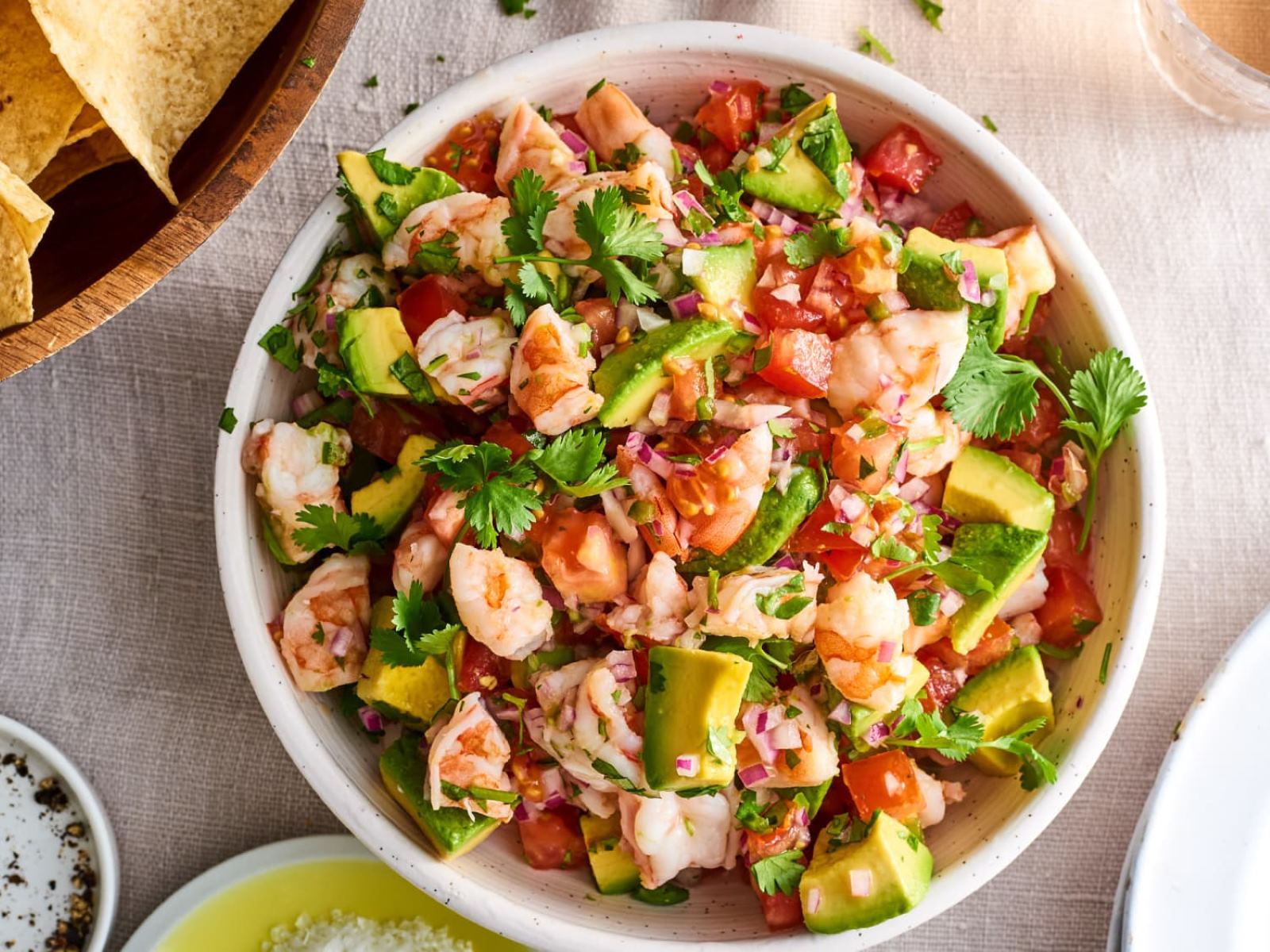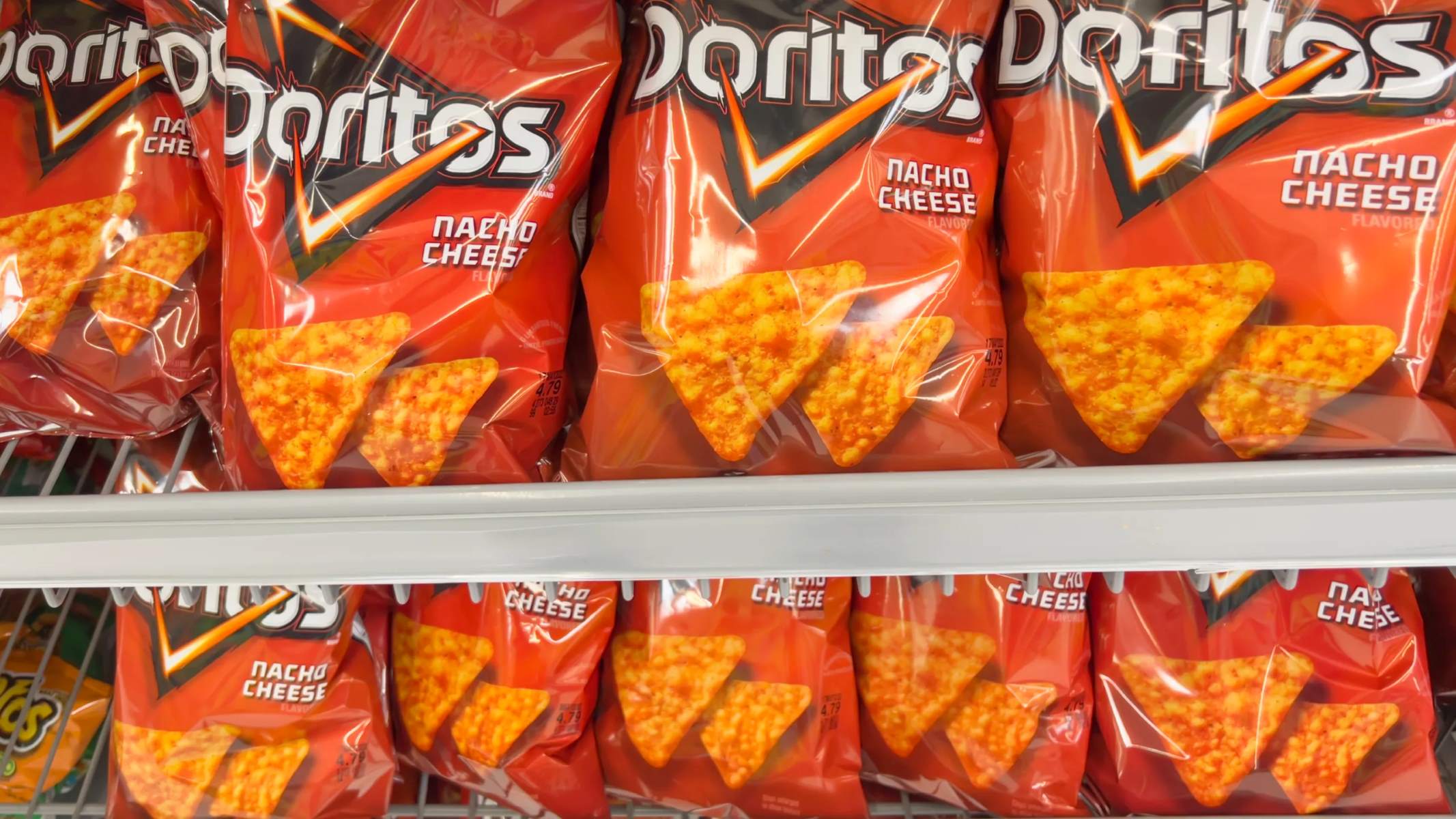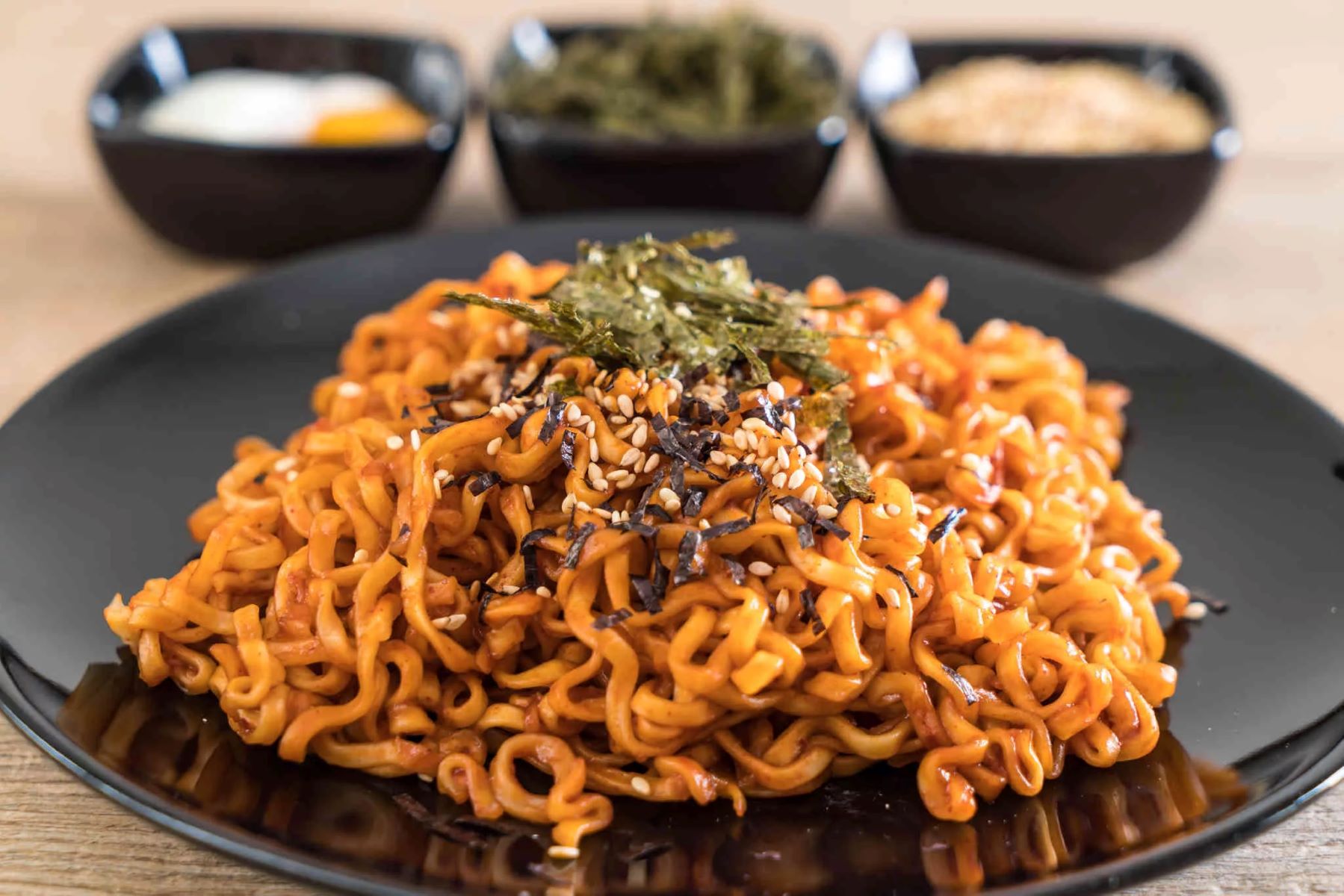Home>Food and Cooking>The Surprising Truth About Airline Food


Food and Cooking
The Surprising Truth About Airline Food
Published: January 27, 2024
Discover the surprising truth about airline food and cooking. Uncover the secrets behind in-flight meals and learn how they are prepared. Get ready for a fascinating culinary journey!
(Many of the links in this article redirect to a specific reviewed product. Your purchase of these products through affiliate links helps to generate commission for Regretless.com, at no extra cost. Learn more)
Table of Contents
Introduction
Airline food has long been the subject of jokes and skepticism. However, there's more to this culinary experience than meets the eye. Over the years, airline food has evolved significantly, reflecting changes in technology, consumer preferences, and the airline industry as a whole. From the early days of simple sandwiches to today's gourmet meals, the journey of airline food is a fascinating one that offers insights into the realms of history, science, economics, and the future of travel.
The evolution of airline food mirrors the evolution of air travel itself. As airlines have sought to differentiate themselves and provide added value to passengers, the quality and variety of in-flight meals have become increasingly important. The challenges of preparing and serving food at high altitudes, the economics of providing meals to hundreds of passengers, and the future of airline food in the age of sustainability and changing consumer tastes are all integral parts of this intriguing narrative.
In this article, we will explore the surprising truth about airline food, delving into its history, the science behind taste at high altitudes, the economics of airline food, and what the future holds for this often-maligned aspect of the travel experience. Join us on a journey through the skies as we uncover the secrets, challenges, and innovations that shape the world of airline food.
The History of Airline Food
Airline food has a storied history that parallels the development of commercial air travel. In the early days of aviation, passengers were offered minimal sustenance, often limited to simple sandwiches and snacks. The first scheduled passenger airline, the St. Petersburg-Tampa Airboat Line, which commenced operations in 1914, did not provide in-flight meals. However, as air travel became more mainstream and airlines sought to enhance the passenger experience, the provision of food on flights became increasingly common.
During the 1920s and 1930s, airlines began to offer more substantial meals to passengers. These early in-flight meals were basic, consisting of cold sandwiches and fruit. As air travel continued to grow in popularity, airlines recognized the opportunity to differentiate themselves by offering more elaborate and diverse food options.
The 1950s and 1960s marked a significant turning point in the history of airline food. This era saw the introduction of hot meals served on fine china, accompanied by silverware and linen napkins. Airlines competed fiercely to provide the most luxurious and sophisticated dining experiences at 30,000 feet. The glamour and elegance associated with air travel during this period extended to the culinary offerings on board.
The 1970s brought about a shift in the way airline food was prepared and served. With the advent of mass air travel and the rise of commercial aviation, airlines faced the challenge of efficiently catering to a larger volume of passengers. This led to the introduction of pre-packaged, standardized meals that could be easily distributed to a large number of travelers. While this approach streamlined the process of in-flight dining, it also gave rise to the stereotypical perception of "mass-produced" airline food.
In subsequent decades, the quality and variety of airline food fluctuated as airlines grappled with economic pressures and changing consumer preferences. The 21st century has witnessed a resurgence of interest in elevating the culinary experience in the skies, with many airlines partnering with renowned chefs and investing in high-quality, gourmet in-flight meals.
The history of airline food reflects not only the evolution of air travel but also broader societal and cultural shifts. From humble beginnings to the height of sophistication and back to practicality, the story of airline food is a testament to the dynamic nature of the aviation industry and the enduring quest to provide a memorable and satisfying travel experience.
The Science Behind Taste at High Altitudes
The experience of dining at high altitudes is vastly different from enjoying a meal on the ground. As aircraft ascend to cruising altitudes of 30,000 feet or more, passengers may notice subtle changes in the way food tastes. These alterations are not merely a figment of the imagination but are rooted in the science of how our senses perceive flavor under the unique conditions of air travel.
One of the primary factors influencing taste at high altitudes is the low humidity in the cabin environment. The humidity levels inside an aircraft are typically lower than those experienced on the ground. This dry air can desensitize the taste buds, making flavors seem muted or less pronounced. As a result, foods that are enjoyed for their bold and robust flavors on the ground may appear somewhat subdued in the air.
Furthermore, the reduced air pressure at cruising altitudes can affect the functioning of the olfactory system, which is responsible for our sense of smell. The combination of low humidity and decreased air pressure can lead to nasal congestion and a diminished ability to detect aromas effectively. Since much of what we perceive as taste is actually derived from the sense of smell, this can significantly impact the overall flavor experience during air travel.
In addition to these physiological factors, the background noise in an aircraft cabin can also influence taste perception. The ambient noise level during flight, including the hum of the engines and the general din of the cabin, can affect the way we perceive flavors. Studies have shown that loud noise can suppress the sensitivity of taste buds, making it more challenging to discern subtle nuances in food and beverages.
The interaction between these various elements creates a unique sensory environment that shapes the way we experience food and drink while flying. Airlines and food service providers must take these factors into account when designing and preparing in-flight meals. This includes adjusting seasoning levels to compensate for reduced taste sensitivity, choosing ingredients with robust flavors, and exploring novel culinary approaches that can thrive in the airborne dining environment.
Understanding the science behind taste at high altitudes is crucial for enhancing the in-flight dining experience. By recognizing the impact of environmental factors on taste perception, airlines can develop strategies to optimize flavors and provide passengers with enjoyable and satisfying meals during their journeys above the clouds.
The Economics of Airline Food
The provision of food and beverages on airlines is not only a culinary consideration but also a complex economic factor that significantly impacts the operational costs and overall business strategies of airlines. The economics of airline food encompasses a range of interconnected elements, including procurement, logistics, waste management, and customer satisfaction.
One of the fundamental economic challenges associated with airline food is the procurement and sourcing of ingredients. Airlines must navigate the intricacies of securing high-quality, fresh food items while adhering to strict safety and hygiene standards. This often involves establishing partnerships with suppliers and distributors capable of meeting the unique demands of the aviation industry. Additionally, the logistics of transporting perishable goods to various airline catering facilities across the globe add another layer of complexity to the supply chain.
The efficient management of food inventory is another critical aspect of the economics of airline food. Airlines must carefully forecast the demand for in-flight meals on different routes and adjust their provisioning accordingly. Overestimating or underestimating the quantity of food and beverages required can lead to unnecessary waste or potential revenue loss. Moreover, the limited storage space on aircraft necessitates meticulous planning to optimize the onboard inventory without compromising the variety and quality of meal options.
Waste management presents a significant economic and environmental consideration for airlines. Minimizing food waste while ensuring passenger satisfaction is a delicate balancing act. Airlines strive to implement strategies that reduce excess food spoilage and unsold items, as well as explore sustainable disposal methods for unavoidable waste. The economic implications of food waste extend beyond the cost of the unused provisions to encompass environmental impact and corporate social responsibility.
Customer satisfaction and loyalty are integral components of the economics of airline food. In an industry where differentiation and customer experience are paramount, the quality and variety of in-flight meals play a crucial role in shaping passenger perceptions. Airlines must weigh the cost of providing diverse and appealing food options against the potential benefits of enhancing passenger satisfaction, loyalty, and overall brand perception.
The economics of airline food is a multifaceted domain that requires careful consideration of costs, customer preferences, operational efficiency, and sustainability. By navigating these economic intricacies effectively, airlines can optimize their in-flight dining offerings to strike a balance between financial viability and delivering a memorable culinary experience to passengers.
The Future of Airline Food
The future of airline food holds promise for innovative culinary experiences that cater to the evolving preferences and priorities of air travelers. As the aviation industry continues to adapt to changing consumer behaviors, technological advancements, and sustainability imperatives, the trajectory of in-flight dining is poised for transformation. Several key trends and developments are shaping the future landscape of airline food, offering a glimpse into the possibilities that lie ahead.
1. Culinary Innovation and Personalization
Airlines are increasingly collaborating with renowned chefs and culinary experts to elevate the quality and diversity of in-flight meals. The focus on culinary innovation extends beyond traditional menu offerings to encompass personalized dining experiences tailored to individual preferences. Advancements in food preparation and presentation techniques, coupled with the integration of regional and global flavors, are set to redefine the in-flight dining experience, offering passengers a delightful journey through the world of gastronomy at 30,000 feet.
2. Health-Conscious and Sustainable Choices
With a growing emphasis on health and wellness, airlines are reimagining their menus to feature nutritious, balanced, and sustainably sourced meal options. The future of airline food is expected to embrace plant-based and eco-friendly alternatives, catering to the dietary needs of health-conscious travelers while aligning with environmentally responsible practices. From organic ingredients to reduced packaging waste, the pursuit of sustainable and health-centric culinary solutions is set to reshape the in-flight dining landscape, reflecting a broader commitment to promoting well-being and environmental stewardship.
3. Technological Integration and Personalized Service
Advancements in technology are poised to revolutionize the way airline food is selected, ordered, and delivered to passengers. From pre-ordering customized meals through mobile apps to leveraging data analytics for personalized dining recommendations, airlines are leveraging technology to enhance the convenience and personalization of in-flight culinary experiences. Additionally, the integration of smart galley equipment and automated food preparation systems holds the potential to streamline onboard operations, ensuring efficient service and consistent meal quality.
4. Cultural Immersion and Experiential Dining
The future of airline food transcends mere sustenance, offering passengers immersive culinary journeys that celebrate diverse cultures and traditions. Airlines are exploring opportunities to showcase regional cuisines, culinary heritage, and interactive dining experiences that transport travelers to destinations even before they land. By curating in-flight menus that reflect the culinary tapestry of global destinations, airlines are poised to enrich the travel experience, fostering a deeper connection between food, culture, and the joy of exploration.
5. Wellness-Driven Hospitality and Passenger Well-Being
In an era where holistic well-being is paramount, the future of airline food extends beyond flavors and presentation to encompass a holistic approach to passenger wellness. Airlines are integrating wellness-driven initiatives into their in-flight dining offerings, incorporating elements such as mindfulness-inspired menus, hydration-focused beverage selections, and nourishing meal options designed to promote comfort and vitality during air travel.
The future of airline food is a dynamic tapestry woven with culinary creativity, sustainability imperatives, technological integration, cultural immersion, and a profound commitment to passenger well-being. As airlines navigate this evolving landscape, the convergence of these trends promises to redefine the in-flight dining experience, offering travelers a delightful fusion of gastronomic excellence, cultural exploration, and holistic wellness, all served with a side of innovation and hospitality above the clouds.
Conclusion
The world of airline food is a captivating tapestry woven with threads of history, science, economics, and innovation. From its humble beginnings of simple sandwiches to the era of gourmet dining at 30,000 feet, airline food has mirrored the evolution of air travel and societal trends. As we soar into the future, the trajectory of in-flight dining holds promise for a renaissance marked by culinary creativity, sustainability imperatives, technological integration, cultural immersion, and a profound commitment to passenger well-being.
The history of airline food serves as a testament to the dynamic nature of the aviation industry, reflecting the interplay of consumer preferences, technological advancements, and economic considerations. The evolution of in-flight dining has witnessed the rise and fall of culinary sophistication, from the glamour of fine dining in the skies to the practicality of standardized meal offerings. This journey through time underscores the enduring quest to provide a memorable and satisfying travel experience, showcasing the resilience and adaptability of airline food in the face of changing landscapes.
The science behind taste at high altitudes unravels the sensory intricacies that shape the in-flight dining experience. Understanding the impact of environmental factors on taste perception empowers airlines to optimize flavors and provide passengers with enjoyable and satisfying meals during their journeys above the clouds. The interplay of low humidity, reduced air pressure, and ambient noise creates a unique sensory environment that influences the way we experience food and drink while flying, inspiring culinary innovation tailored to the airborne dining environment.
The economics of airline food presents a complex web of considerations, encompassing procurement, logistics, waste management, and customer satisfaction. Navigating these economic intricacies effectively allows airlines to optimize their in-flight dining offerings, striking a balance between financial viability and delivering a memorable culinary experience to passengers. The pursuit of sustainable practices and personalized dining solutions is poised to reshape the economic landscape of airline food, reflecting a broader commitment to holistic well-being and environmental stewardship.
As we gaze into the future, the trajectory of airline food holds promise for innovative culinary experiences that cater to the evolving preferences and priorities of air travelers. The convergence of trends such as culinary innovation, health-conscious and sustainable choices, technological integration, cultural immersion, and wellness-driven hospitality promises to redefine the in-flight dining experience, offering travelers a delightful fusion of gastronomic excellence, cultural exploration, and holistic well-being above the clouds.
In conclusion, the surprising truth about airline food transcends its culinary dimensions, offering a compelling narrative that intertwines history, science, economics, and the human experience of air travel. As we embark on this journey through the skies, the evolution and future of airline food beckon with the promise of a delightful fusion of innovation, cultural immersion, and holistic well-being, all served with a side of culinary excellence and hospitality above the clouds.













